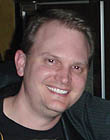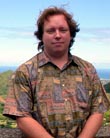|
|
 
|
|
Author
|
Topic: Repertory Plates
|
|
|
Scott Norwood
Film God

Posts: 8146
From: Boston, MA. USA (1774.21 miles northeast of Dallas)
Registered: Jun 99
|
 posted 09-22-2009 11:52 AM
posted 09-22-2009 11:52 AM





Interesting list.
Is there any theatre anywhere that actually makes the distinction among the various 2.35/2.39 scope formats?
In most such venues, you get four formats (Academy, 1.66, 1.85, scope), plus silent if you're lucky. I could see also having Movietone, 1.75, and 2.55. Beyond that, it just seems like splitting hairs, especially since there is always a fudge factor due to available lens sizes and keystone issues.
| IP: Logged
|
|
|
|
Jack Theakston
Master Film Handler
Posts: 411
From: New York, USA
Registered: Sep 2007
|
 posted 09-22-2009 04:24 PM
posted 09-22-2009 04:24 PM




quote: Scott Norwood
In most such venues, you get four formats (Academy, 1.66, 1.85, scope), plus silent if you're lucky. I could see also having Movietone, 1.75, and 2.55. Beyond that, it just seems like splitting hairs, especially since there is always a fudge factor due to available lens sizes and keystone issues.
In mainstream theaters, yes, with masking setting sometimes at a premium, I'm sure it doesn't make much difference. But a theater that regularly runs the variety of programming that would call for the above ratios (I seriously doubt anyone but a repertory theater would need a SuperScope plate). If you're running silent, for example, you're going so far as to re-center the image, right?
In situations where you're doing perhaps one or two shows of one film, I don't see any reason why you wouldn't have the opportunity to try to get the most exact presentation possible. For those instances, that's why I'm compiling such a list.
| IP: Logged
|
|
|
|
Steve Guttag
We forgot the crackers Gromit!!!

Posts: 12814
From: Annapolis, MD
Registered: Dec 1999
|
 posted 09-22-2009 09:00 PM
posted 09-22-2009 09:00 PM




We set up a LOT of rep houses...including the likes of the Library of Congress, American Film Institute and the National Archives.
I think your list can be shortened quite a bit based on what you might actually GET. If you DO get one of the odd-balls, then worry about getting/making the needed plate. Remember, you can always bore out a smaller plate to a larger one. If really worried, keep a couple of extra 2:1 or hole plates on hand.
We generally set folks up with the ones they will get... 1.85, 1.66, 1.37 and Scope (current dimensions and don't cater to the .715 x .838...with most any print you get, you will have splice flash or pad roller scratches out there). Lately, we have added 1.75 to the mix. It generally does not require another lens and it also allows for movies composed for 16:9 (1.78).
If the theatre has 35-mag capability, we do equip it for 2.55:1 scope too.
For Silent, we always equip those theatres that are set up to play it for the standard aperture (.680 x .910 give or take a 1/1000th or two). However we have also come up with a "Super-Silent"...which is basically just before the frame lines and just before the perforations. Several special venues have wanted this for educational reasons rather than as a presentation format...they want to see as much of the frame as possible when studying the movie...I want to say it is about .725 x .945 or so.
Steve
| IP: Logged
|
|
|
|
|
|
All times are Central (GMT -6:00)
|
|
Powered by Infopop Corporation
UBB.classicTM
6.3.1.2
The Film-Tech Forums are designed for various members related to the cinema industry to express their opinions, viewpoints and testimonials on various products, services and events based upon speculation, personal knowledge and factual information through use, therefore all views represented here allow no liability upon the publishers of this web site and the owners of said views assume no liability for any ill will resulting from these postings. The posts made here are for educational as well as entertainment purposes and as such anyone viewing this portion of the website must accept these views as statements of the author of that opinion
and agrees to release the authors from any and all liability.
|

 Home
Home
 Products
Products
 Store
Store
 Forum
Forum
 Warehouse
Warehouse
 Contact Us
Contact Us




 Printer-friendly view of this topic
Printer-friendly view of this topic












